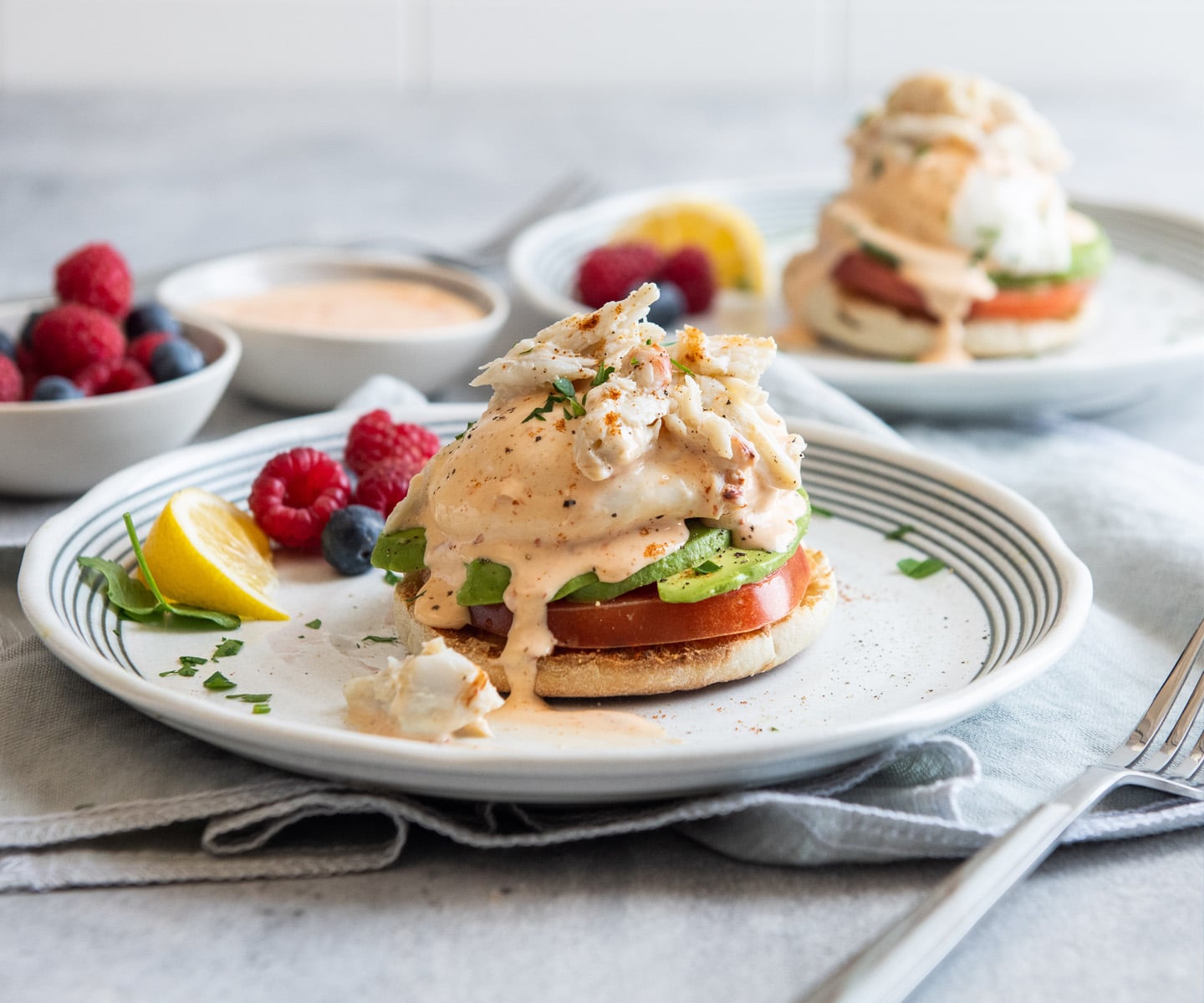Low in fat and high in protein, crab is a nutrient-rich food choice. For example, 85 g (about 3 oz) of blue swimming crab – lump contains 80 calories, 18g of protein, 0g of saturated fat, and 100 mg cholesterol. It features omega-3 fatty acids and is a great source of vitamin B12, copper, selenium, zinc, and other essential nutrients. (See nutrient details.)
Calorie for calorie, crab is high in protein, compared with meat sources that contain saturated fat. “Shellfish are high-quality protein sources—just like land animals—meaning they have all the essential amino acids,” Faye Dong, professor emerita of food science and human nutrition at the University of Illinois, told Time magazine. The high-quality protein in crab helps support building and repair of body cells and tissues.
The American Heart Association calls out crab and other seafood as great choices that are “low in saturated fat” and ”a healthy alternative to many cuts of meat and poultry.”
More crab nutrients
- Vitamin B12, found in crab, helps support nervous system functioning, the formation of blood cells, and energy production. It is commonly found in a variety of animal foods. Older adults are at particular risk of vitamin B12 deficiency because they absorb the vitamin less efficiently (Stover, 2010).
- Copper has a variety of functions in the body, including helping the body produce energy, form red blood cells, build collagen, and more. Along with liver, salmon, nuts, and other foods, crab is an excellent source of copper (Harvard Nutrition Source).
- Selenium, a trace mineral, is important for thyroid function and protection of body cells from damage (NIH). Shellfish such as crab are excellent sources of selenium.
- Zinc plays a role in keeping the immune system healthy while also helping with growth, wound healing, and DNA production (NIH).
Omega-3 fatty acid source
Seafood options, including finfish, crab, and shrimp, are important and almost exclusive sources of marine omega-3s in the diet. Marine omega-3s are the most bioavailable form of these healthy fats, as compared with plant sources of other omega-3s. (See the Pills, Plants, or Seafood? Comparing Omega-3 Sources [SG1] blog for more information about omega-3s.) This special benefit of seafood is one reason the USDA 2020-2025 Dietary Guidelines for Americansrecommend eating at least two servings of seafood per week. Most Americans don’t eat enough, they add.
Omega-3s are recommended for people of all ages because they support heart health, brain and eye health, and immune system functioning (NIH).
Nutrition scientist Professor Baukje de Roos, deputy director of the Rowett Institute at Scotland’s University of Aberdeen, told Seafood Source that dietary contributions of omega-3 from crab and other shellfish are often overlooked when we talk about seafood nutrition. Oregon State University compares the omega-3 fatty acids values of a variety of seafood choices. Canned blue crab, as well as Alaskan King crab, each provide about 0.4 g omega-3s (as EPA plus DHA) per 100 g serving. That’s lower than equal serving sizes of tuna or salmon, yet higher than haddock, red snapper, catfish, or flounder, according to their data summary.
The bottom line is that crab is high in protein, low in saturated fat, and an excellent source of essential nutrients—making it an excellent addition to the diet.
A healthy eating plan depends on eating a variety of foods, including crab and other seafood for the extra benefit of omega-3s. When planning your seafood intake of at least two servings per week, be sure to include crab and other shellfish in your healthy foods line-up.








